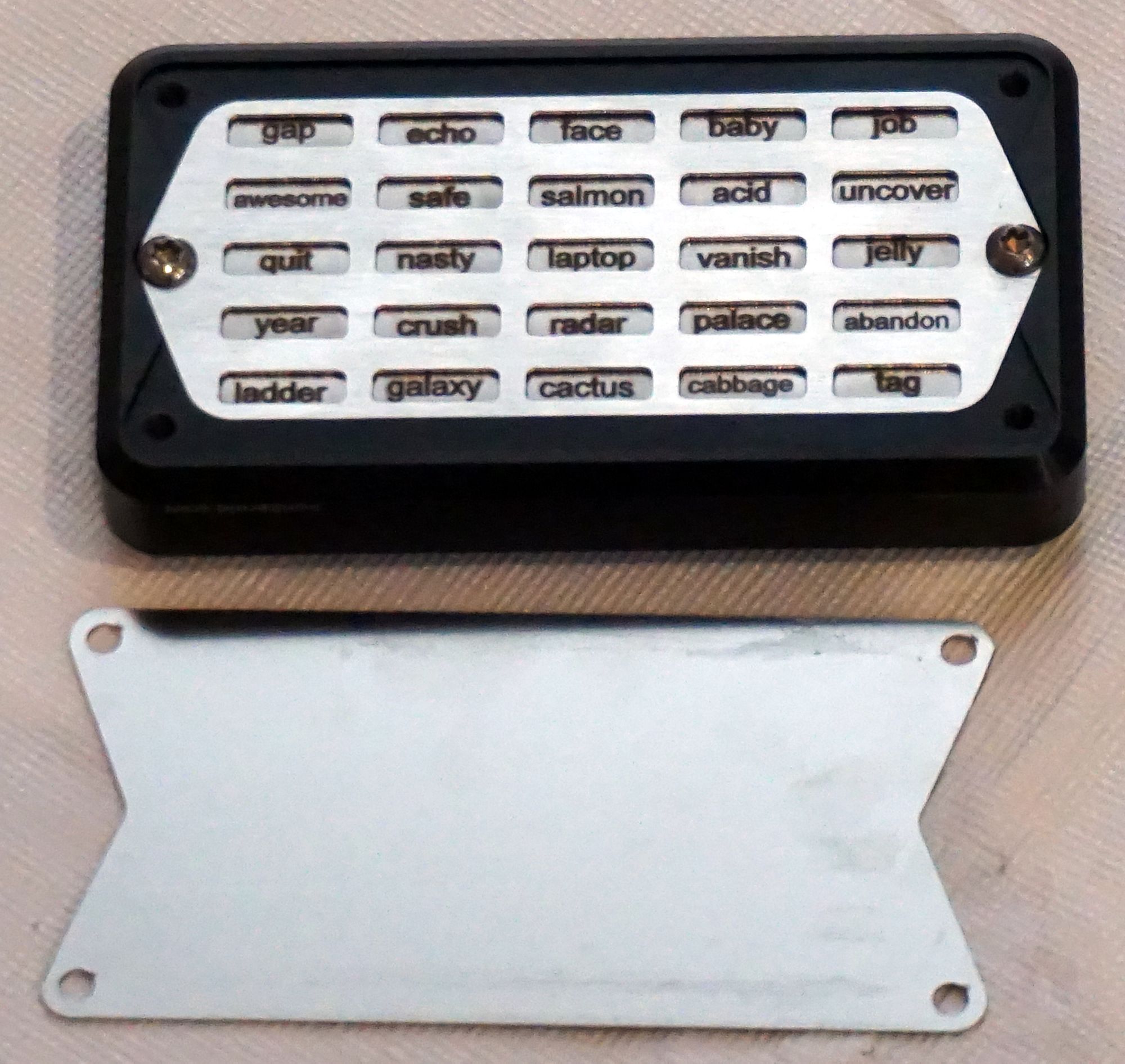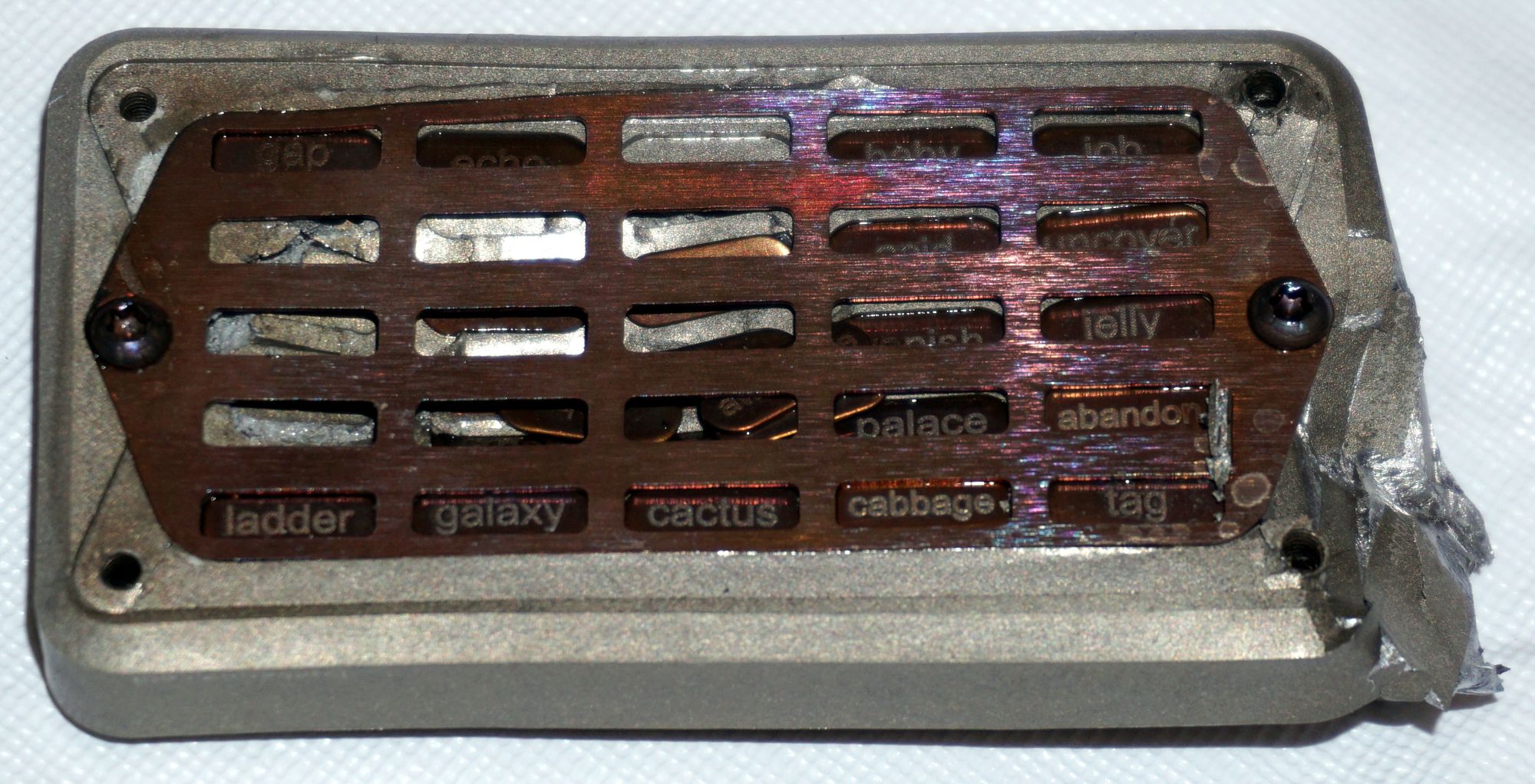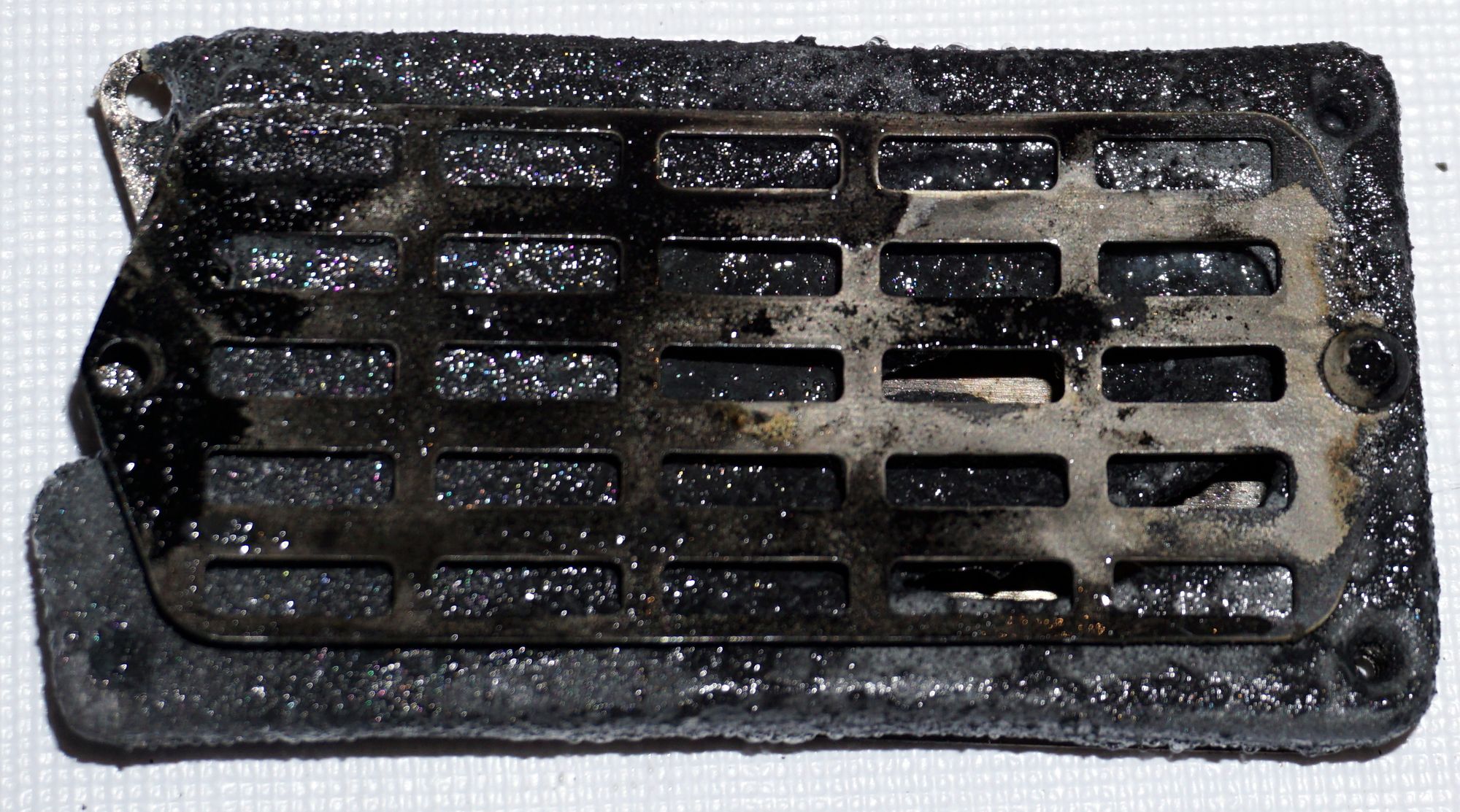Bunkeroid can be purchased at bunkeroid.com. It claims “BUNKEROID can not be damaged by a common accident or natural disaster. Stainless steel has more durability than paper or any other deposit.”
Bunkeroid is unique in that you tell them which seed words you want on your tiles (plus a bunch of other words you won’t use in order to reduce your trust in them) and they have a special “no data stored” system.
“When the transaction is confirmed, we use the TXID of your transaction to create a ‘NoDataStored - system ID’ number. We use the ‘HMAC’ function to create a code, an encrypted text, which is created from the text of your payment combined with our secret password. This HMAC is subsequently engraved on the Bunkeroid. This code gives us an indication that you are our customer without knowing who you are or where you are from. With the ‘NoDataStored - system ID’ we can easily identify you.”
Setup
Easy enough to assemble since the tiles are pre-engraved with the full words.

Heat Stress Test
The test seemed to be going fine for the first 5 minutes, then one end of the device collapsed and a bunch of slag fell to the ground. Upon further inspection, the interior of the device had also collapsed. This is a catastrophic failure. Bunkeroid’s web site claims that “every part of Bunkeroid is made from stainless steel” but I’m quite sure that the main portion of the case is actually constructed of aluminum based upon how it melted. To my knowledge there are no stainless steel alloys that melt below 2400°F, plus the main body of the device did not change color after it was heated as steel tends to do.

Corrosion Stress Test
Still sizzling; I’m sure that the rest of the aluminum body would have completely disintegrated if I’d added more acid.

Crush Stress Test
There wasn’t enough of the device left to bother with crushing it, though we know that aluminum is a fairly malleable metal so I wouldn’t have expected it to survive.